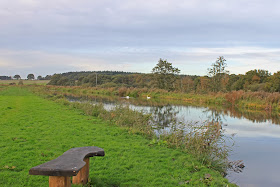Narrowboat
by LTC Rolt
November 2013
Its not every day that I review a book which I am reading for the third time - but that fact alone has to say something about it.
Narrowboat is a standing classic item of waterways literature, unique in its style, period and approach. It was written by Tom Rolt in 1939 / 40 as he and his new bride undertook a slow 400 mile figure of eight journey through England aboard Cressey, their home for several years.
The ground covered is very familiar to me, but it was a different age when some commercial traffic remained but many canals were falling into disrepair. His experience led directly to his pivotal contribution in the founding of the IWA and everything which has followed in the restoration movement.
Tom wasnt so much a leader as a man with a way with words. Sure, the writing has more than a little clipped "pathe news" about it but his writing is both evocative and insightful. This book, more than anything else raised the public awareness about the plight of the canal network and proved once again that the pen is mightier than the sword.
Every time I read it (about once every three years) I find something new. This time is was his his account of travelling the Shropshire Union and Staffs and Worcester (the Stour Cut) which took them past Norbury Junction. At that time he debated on a trip to Wappenshall, the then assumed head of navigation, but he passed it by hoping to return another time. That time never happened and the canal became derelict soon after - what a shame.
Then he was consudering his route to Braunston and rejected a trip up the Hatherton Branch Canal and out via Huddlesford. In the event he took the easier route via Gt Haywood on account of the high lockage and industry in the norther reaches of the BCN. ITS such a shame that we were not left with a Rolt description of these two canals which have been largely obliterated from the map.
Its an evocative and sometimes wistful look at the country, hankering back to the agricultural way of life. But for all the changes his description of mooring under the lee of a hedge whilst a storm rages overhead, snug and safe beside the cabin fire is as true today as it was 70 years ago. The essential appeal of the canals remains unchanged to the enthusiasts among us.
If you havn't read the book for a while and fancy some canal escapism of the highest order over the dark winter nights take another look at it.
It was and remains the finest book of its genre.














































